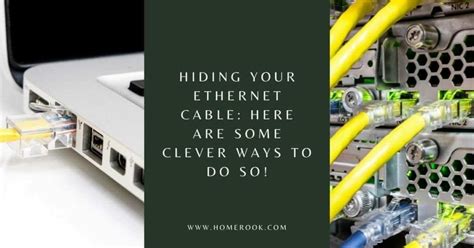Get a Stable Network: How Deep to Bury Ethernet Cable
Burying Ethernet cable offers a robust, high-bandwidth solution for extending your network to outbuildings, sheds, or even across your property for superior internet access. But before you start digging, a critical question arises: how deep should you bury that cable? The answer isn't a single number, but depends on several factors influencing cable longevity and signal quality. This guide explores the ideal burial depth, considering various scenarios and potential pitfalls.
Why Bury Ethernet Cable at All?
Wireless networks, while convenient, suffer from interference, signal degradation over distance, and susceptibility to environmental factors. A buried Ethernet cable offers a significant advantage:
- Reliable Signal: A wired connection provides a consistent, high-speed signal, unaffected by walls, weather, or other wireless devices.
- Higher Bandwidth: Ethernet cables support much higher bandwidths than Wi-Fi, crucial for streaming high-definition video, online gaming, and other bandwidth-intensive applications.
- Security: Wired connections are inherently more secure than wireless, reducing the risk of unauthorized access.
- Durability: When properly installed, buried Ethernet cables are far more durable than exposed wiring, resisting damage from weather, animals, and accidental damage.
How Deep Should You Bury Ethernet Cable?
The recommended burial depth for Ethernet cable isn't standardized, varying based on local conditions and cable type. However, a general guideline is to bury it at least 18 inches (46 cm) deep. This depth provides ample protection against:
- Freezing and Thawing: Fluctuations in temperature can damage cables, especially in climates with harsh winters. Burying deeper minimizes the impact of these temperature swings.
- Physical Damage: This depth protects the cable from being damaged by lawnmowers, shovels, digging animals (like gophers or moles), and other potential hazards.
- Erosion: Deeper burial helps protect the cable from erosion caused by heavy rainfall or shifting soil.
What Factors Influence Burial Depth?
Several factors influence the optimal burial depth:
- Local Climate: In areas with severe winters, deeper burial is crucial to protect against frost heaves.
- Soil Type: Rocky or compacted soil might require a shallower depth, while loose, sandy soil might benefit from deeper burial.
- Cable Type: Direct-burial Ethernet cable is designed to withstand the rigors of underground installation. Using standard indoor/outdoor cable is not recommended for direct burial.
- Presence of Other Underground Utilities: Before digging, always contact your local utility companies to locate any underground gas, water, or power lines to prevent damage and potential hazards.
What if I Need to Bury Cable Across a Driveway or Road?
Burying Ethernet cable across a driveway or road requires extra precautions. You should consult with a professional installer. They'll assess the situation and determine the appropriate depth and protective measures (conduit or other protective encasements) to ensure the cable's longevity and safety.
H2: What type of cable should I use for burying underground?
Direct burial rated Ethernet cable is essential for underground installation. These cables are designed with a tougher outer jacket to withstand the harsh conditions of the soil. Do not attempt to bury standard indoor/outdoor cables; they're not designed for direct burial and will likely fail prematurely.
H2: Can I bury Ethernet cable with other utilities?
It is generally advised against burying Ethernet cable with other utilities. This increases the risk of damage during utility maintenance or repairs. If you must run it alongside other utilities, consider using conduit for added protection and to clearly delineate the Ethernet cable.
H2: What happens if my buried Ethernet cable gets damaged?
Repairing a damaged buried Ethernet cable can be challenging and expensive. This is why proper installation depth and cable selection are crucial. If damage does occur, you will likely need to dig up a section of the cable and replace the damaged portion, possibly requiring professional assistance.
Conclusion
Burying Ethernet cable offers a reliable and high-bandwidth networking solution for various applications. By following the recommended guidelines and considering the factors discussed above, you can ensure a long-lasting and efficient network connection that stands the test of time. Remember, always prioritize safety and consult with professionals for complex installations. Prioritize thorough planning and research before you begin digging!

